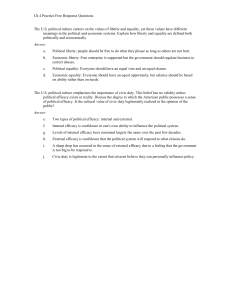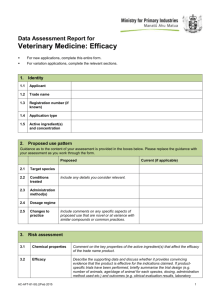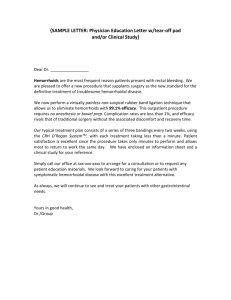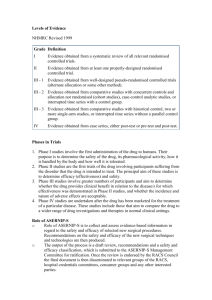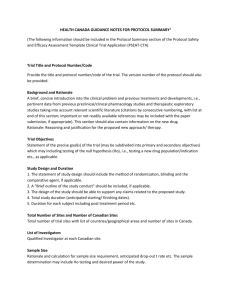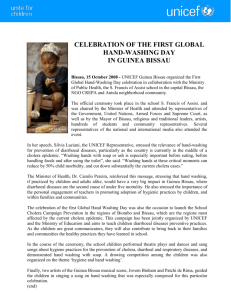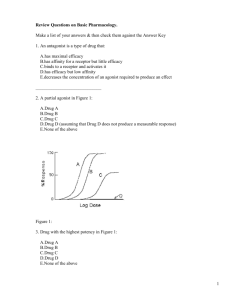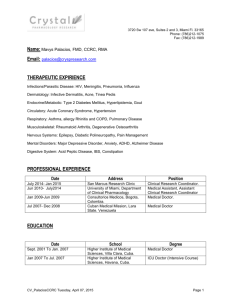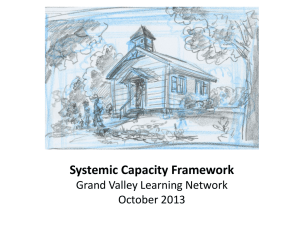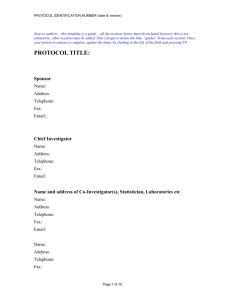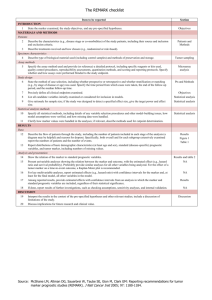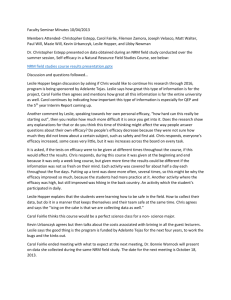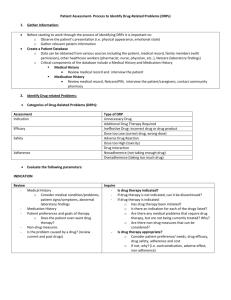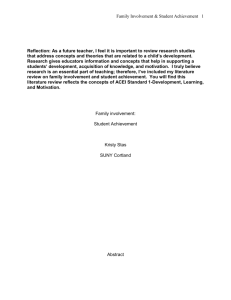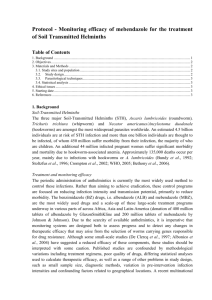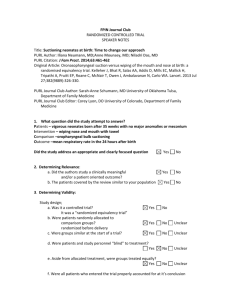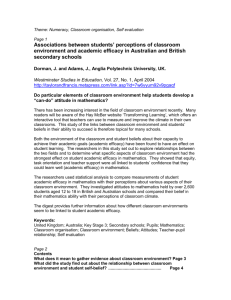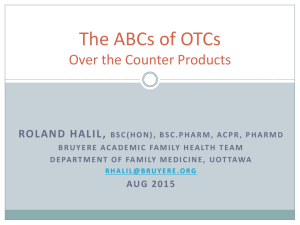LSSP-CT-2004
advertisement
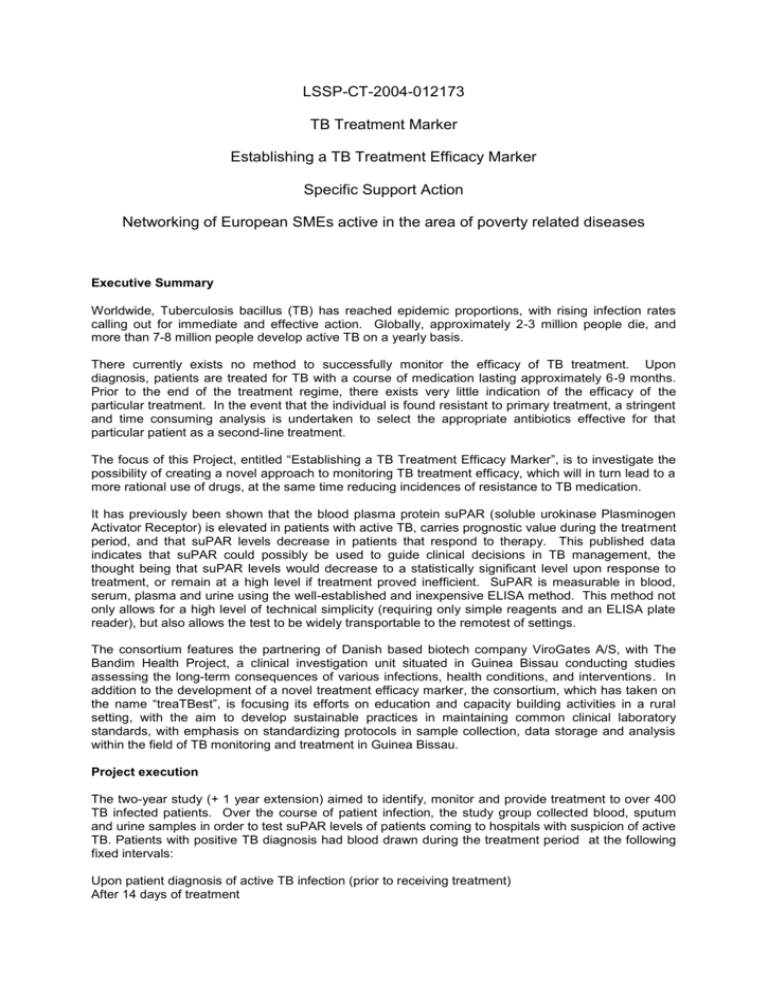
LSSP-CT-2004-012173 TB Treatment Marker Establishing a TB Treatment Efficacy Marker Specific Support Action Networking of European SMEs active in the area of poverty related diseases Executive Summary Worldwide, Tuberculosis bacillus (TB) has reached epidemic proportions, with rising infection rates calling out for immediate and effective action. Globally, approximately 2-3 million people die, and more than 7-8 million people develop active TB on a yearly basis. There currently exists no method to successfully monitor the efficacy of TB treatment. Upon diagnosis, patients are treated for TB with a course of medication lasting approximately 6-9 months. Prior to the end of the treatment regime, there exists very little indication of the efficacy of the particular treatment. In the event that the individual is found resistant to primary treatment, a stringent and time consuming analysis is undertaken to select the appropriate antibiotics effective for that particular patient as a second-line treatment. The focus of this Project, entitled “Establishing a TB Treatment Efficacy Marker”, is to investigate the possibility of creating a novel approach to monitoring TB treatment efficacy, which will in turn lead to a more rational use of drugs, at the same time reducing incidences of resistance to TB medication. It has previously been shown that the blood plasma protein suPAR (soluble urokinase Plasminogen Activator Receptor) is elevated in patients with active TB, carries prognostic value during the treatment period, and that suPAR levels decrease in patients that respond to therapy. This published data indicates that suPAR could possibly be used to guide clinical decisions in TB management, the thought being that suPAR levels would decrease to a statistically significant level upon response to treatment, or remain at a high level if treatment proved inefficient. SuPAR is measurable in blood, serum, plasma and urine using the well-established and inexpensive ELISA method. This method not only allows for a high level of technical simplicity (requiring only simple reagents and an ELISA plate reader), but also allows the test to be widely transportable to the remotest of settings. The consortium features the partnering of Danish based biotech company ViroGates A/S, with The Bandim Health Project, a clinical investigation unit situated in Guinea Bissau conducting studies assessing the long-term consequences of various infections, health conditions, and interventions. In addition to the development of a novel treatment efficacy marker, the consortium, which has taken on the name “treaTBest”, is focusing its efforts on education and capacity building activities in a rural setting, with the aim to develop sustainable practices in maintaining common clinical laboratory standards, with emphasis on standardizing protocols in sample collection, data storage and analysis within the field of TB monitoring and treatment in Guinea Bissau. Project execution The two-year study (+ 1 year extension) aimed to identify, monitor and provide treatment to over 400 TB infected patients. Over the course of patient infection, the study group collected blood, sputum and urine samples in order to test suPAR levels of patients coming to hospitals with suspicion of active TB. Patients with positive TB diagnosis had blood drawn during the treatment period at the following fixed intervals: Upon patient diagnosis of active TB infection (prior to receiving treatment) After 14 days of treatment After 1 month of treatment After 2 months of treatment After 5 months of treatment After 8 months of treatment The key objective was to investigate if suPAR levels decline upon treatment, are prognostic for TB treatment efficacy, and if so, at what time point can suPAR be used in the clinical decision making process. In addition to funding the design, establishment, and implementation of the study, the majority of the European Commission contribution was used in the physical re-establishment of the country’s TB testing facility at the National Laboratories for Public Health (LNSP), a site previously destroyed during the country’s civil war in 1998. At the end of inclusion, 1691 TB suspects had been tested for active TB using smear microscopy and x-ray. Of these, 466 were found to have active TB. Inclusion of 400 patients was required to reach the sufficient number to satisfy proposed power calculations, and with the granted 12-months extension, we did reach the target. Total number of patients screening 1691 With TB 466 Without TB 1225 With follow up 1020 Became TB during the follow up 22 With plasma 962 Alive 858 Death 104 Figure above: Flowchart of TB suspects The treaTBest consortium consists of: ViroGates A/S Diplomvej 377, SCION-DTU DK-2800 Kgs. Lyngby Denmark (Direct) +45 88 70 82 58 (Fax) +45 88 70 80 90 (Mobile) +45 22 46 13 51 (Website) www.virogates.com The Bandim Health Project Apartado 862 1004 Bissau Codex Guinea Bissau (Direct) +245 25 55 43 (Fax) +245 20 16 72 Coordinator: Dr. Jesper Eugen-Olsen PhD Partner Lead: Dr. Peter Aaby PhD

![Quality assurance in diagnostic radiology [Article in German] Hodler](http://s3.studylib.net/store/data/005827956_1-c129ff60612d01b6464fc1bb8f2734f1-300x300.png)
